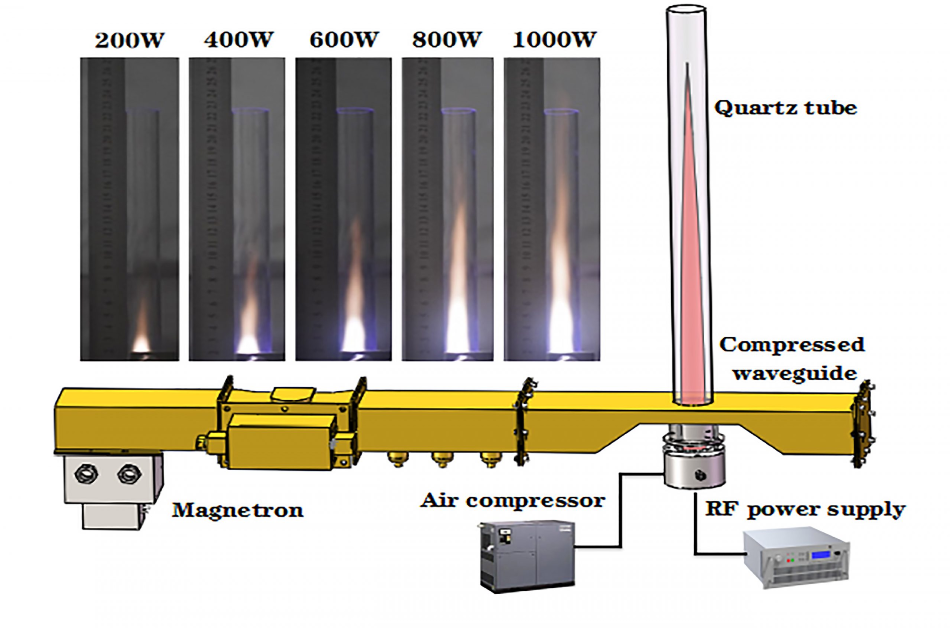May 6 2020
Fossil fuels have turned out to be the essential energy source that humans rely on, particularly for transportation.
 A schematic diagram of a prototype microwave air plasma thruster and the images of the bright plasma jet at different microwave powers. This device consists of a microwave power supply, an air compressor, a compressed microwave waveguide and a flame ignitor. Image Credit: Jau Tang and Jun Li.
A schematic diagram of a prototype microwave air plasma thruster and the images of the bright plasma jet at different microwave powers. This device consists of a microwave power supply, an air compressor, a compressed microwave waveguide and a flame ignitor. Image Credit: Jau Tang and Jun Li.
But fossil fuels are both hazardous and unsustainable, acting as the major source of greenhouse gas emissions and resulting in detrimental respiratory effects and devastation because of global warming.
At the Institute of Technological Sciences at Wuhan University, a research team has developed a prototype device that makes use of microwave air plasmas for jet propulsion. The engine has been described in the AIP Advances journal, from AIP Publishing.
The motivation of our work is to help solve the global warming problems owing to humans’ use of fossil fuel combustion engines to power machinery, such as cars and airplane. There is no need for fossil fuel with our design, and therefore, there is no carbon emission to cause greenhouse effects and global warming.
Jau Tang, Study Author and Professor, Wuhan University
Plasma is the fourth state of matter besides solid, liquid, and gas. Plasma includes an aggregate of charged ions. In nature, it occurs in places like the Earth’s lightning and the surface of the sun. However, it can also be produced.
The team developed a plasma jet by compressing the air with high pressures and making use of a microwave to ionize the pressurized air stream.
This technique is different from earlier efforts to develop plasma jet thrusters. Alternative plasma jet thrusters, such as NASA’s Dawn space probe, utilize xenon plasma, which fails to overcome the friction in the Earth’s atmosphere. Hence, those are not strong enough for use in air transportation.
By contrast, the new plasma jet thruster developed by the team produces the high-pressure, high-temperature plasma in situ by using only electricity and injected air.
The prototype plasma jet device has the ability to lift a steel ball weighing 1 kg over a quartz tube with a diameter of 24 mm, where the high-pressure air is transformed into a plasma jet by passing via a microwave ionization chamber. When scaled, the equivalent thrusting pressure is similar to a commercial airplane jet engine.
The design of the prototype can be scaled up to a full-sized jet by developing a huge array of such thrusters with high-power microwave sources. The team is now working to enhance the efficiency of the device to achieve this aim.
Our results demonstrated that such a jet engine based on microwave air plasma can be a potentially viable alternative to the conventional fossil fuel jet engine.
Jau Tang, Study Author and Professor, Wuhan University
Journal Reference:
Ye, D., et al. (2020) Jet propulsion by microwave air plasma in the atmosphere. AIP Advances. doi.org/10.1063/5.0005814.
Source: https://publishing.aip.org